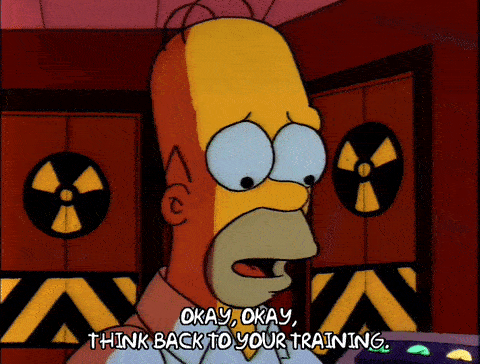The Ultimate Guide to Building a Training Plan for New Employees [+Template!]

Employee training has never been more important. Businesses are struggling to attract and retain talent in the midst of the Great Resignation. Training plans should be well-thought-out strategies that should begin the day an employee starts. The first step? Create a training plan for new employee template.
But first, let’s look at how creating templates benefits your business. A template is a document that outlines the basic structure of a form that you intend to use over and over again. Then, you simply need to customize it when you need to create a new document. It might be a job offer letter, a SOP, or an employee evaluation form.
Want to get new hires up to speed faster, better, and cheaper? Ask us how.
Templates are a great business strategy because they:
- Create consistency
- Save time
- Save money
- Reduce errors
- Are customizable
When they’re kept in a digital library of a mobile-first workplace app, everyone can easily access templates from any device they work from and fill them in as they need.
What Is an Employee Training Plan?
An employee training plan is a manual for how employees should perform certain tasks. The goal of creating this document is to streamline the training information into one document and ensure everyone is doing things uniformly.

An employee training plan safeguards your team from moments like this.
Companies can have training plans for all sorts of tasks. Some might be job-specific while others might be growth opportunities that give workers the skills they need to further their education and move up in a company.
A plan for how to train new employees is a document designed to help new hires during their onboarding period and learn the ropes of their new job and the company.
Often, training plans that are tailored for a smaller group of employees, or an individual employee, provide a greater level of detail that can have better results in overall employee productivity.
Training plans can:
- Give employees the confidence they need to be more productive
- Build institutional knowledge that stays with your company
- Set guidelines that create operational consistency
Pro tip: Create a centralized location on a mobile-first communication tool for all employee training plans and templates to make it easy for HR and managers to find them.
Why Should You Use A Training Plan For New
Let’s start with the most important fact:
50% of hourly workers quit within the first 120 days.
Source: Preppio
Why? Companies fail to have a strong onboarding program. As soon as someone accepts a job with your company, the onboarding process should begin to get them up and running quickly. When they arrive on their first day they already feel like a part of their team. In other words, training does wonders for employee engagement!
Training new employees is a critical part of onboarding. New employee training plans:
- Outline a new hire’s responsibilities to they begin their job with confidence
- Reduce the “hire and flee” rate that happens within those first 45 days
- Empower employees with information to reach peak productivity levels faster
- Set every employee up for long-term success at your company.
- Establish clear expectations
Pro Tip: HR should have an SOP for onboarding that includes a training plan for new employees template!
How To Train A New Employee
There are different ways to train a new employee. And different employees will require different training plans depending on their role within the company. For example, a hotel housekeeping team will have a different set of procedures than the sales team.
But the fundamentals are the same. And this is where a new employee training plan template comes in handy. More on that later.
Here are ten tips for training a new employee.
- Give every employee a training plan tailored to their role. Make sure it’s detailed and covers everything.
- Have a mobile-first app in place so employees can access training materials (both visual and written) on their mobile devices at their convenience. Using a workplace app like Beekeeper also uses inline translation so everyone can read the document in their preferred language.
- Create a checklist that accompanies the training plan. As the employee completes tasks you can both track the progress on the workplace app.
- Be as clear as possible in a training plan. Use checklists and visuals to easily relay the information.
- Encourage employees to ask questions if something is unclear.
- Make a robust training plan with job-specific information as well as guidelines about company policies, mission, and culture.
- Start a mentorship program in your company. Pair new hires with seasoned team leads to guide them through their first few months.
- Supplement a written training plan with in-person engagement opportunities like team meetings or new employee gatherings to connect every person to their colleagues. Creating connections at work is a strong retention strategy.
- Always ask for employee feedback specifically on the clarity of the training plan so your hiring team knows how effective the training was. Then, take action on that feedback to make sure your training plan is rock solid and even better for the next new hire.
- Have a 30-60-90 day check-in schedule for every new hire to see how they’re doing. Give them your feedback and get theirs. Face-to-face time shows you care about their well-being and is an opportunity to maintain, or boost, engagement.
Pro tip: Make sure that employee training doesn’t stop at onboarding. Have training for different milestones to promote growth opportunities and keep employees engaged and striving to do more and move ahead!
What Should An Employee Training Plan Have?
An employee training plan should be as much for employees as they are for their managers. They are a guide for both and will make sure everyone is on the same page and align expectations.
Here are a few must-haves in any employee training plan.
Job Description and Tasks
Every role within your company has a documented job description that outlines
the responsibilities a position has. It might be the same document you used when you posted the job to fill the position. But it might also be a more detailed outline of specific tasks. Include the description so you can use it to establish the training objects and expectations and KPIs related to those tasks.
Identify Everyone Involved
Training plans are specific documents geared towards an individual or a team within
your company. Identify anyone who is involved in each plan. This should include:
- The trainee: the employee or group of employees for whom the plan is designed for
- The trainer: the people who will be in charge of the training including tracking KPIs and progress check-ins
- The trainee’s direct manager: Managers should also be kept in the loop on where their employees are in their training development
- Other internal stakeholders related to the trainee’s position
Training Objectives and Expectations
- Be clear about the objectives and purpose of the training strategy
- Explain the why behind it to help employees understand the rationale
- Include any timelines related to achieving training milestones
- Emphasize that the primary objective of the training is to ensure their success at the company
Targeted KPIs & Measurement Methods
Now that you’ve established goals and expectations, determine how you’re going to measure an employee’s progress and success throughout their training by establishing key performance indicators. Make sure these KPIs align with your company’s KPIs and overarching mission so everyone is working towards successful business outcomes individually and as a team.
Determine Training Methods
So, now that everyone knows what the training entails and the timeline, determine how you’ll deliver the material. This might be:
- A digital document that each employee receives on a mobile workplace app.
- In-person or online instruction
- Training videos on your workplace communication app.
- A hybrid of all of these approaches.
Create a digital checklist so you’ll be alerted when they complete each task.
Pro tip: Be as specific as possible in training plans so employees have a clear understanding of expectations.
Employee Training Plan Template Tips & Tricks
Okay, so you’re ready to create an employee training plan! But you don’t want to reinvent the wheel every time. The best approach is to create a primary template that has everything you need but can be customized by role or team.
Here are a few tips and tricks to help you create a template.
Assess Training Needs
Remember that every position and/or team will require specific training. So you might have training templates for several different groups of people. But the fundamental structure will be the same.

Start by assessing what a position requires and what information and training will ultimately make someone successful in that role. Refer to the job description that’s in the training packet for guidance. Then work backward and create a checklist of training an employee needs to seamlessly transition to their new job.
Get Input to Create a Detailed Template
You’re not going to know everything about every job. When you’re developing a training program, have relevant stakeholders contribute. Create a shared document so you can get valuable insight from managers and executives who are more closely related to the position you’re creating the template for. Include employees currently in this position so they can give first-hand feedback on the training plan and let you know what elements might be missing and what additional items need to be included.
Pro tip: Reevaluate your training plans regularly to always make sure they are current and relevant.
Document Template Changes
Employee training plans should be dynamic. They will inevitably change either to make improvements or as the needs of an employee’s job evolve.
Track the changes and adjustments you make to a training template. You might need to add some things back down the road and you don’t want to lose the work you put in. Also, it’s a good reminder of what worked—and what didn’t.
Track Performance After The Training
Always test the effectiveness of training programs by tracking employee performance. And in this day and age, it’s easier than ever to do that.
If you’re one step ahead of the game, you have a mobile platform (like Beekeeper!) in use. And every employee has the app downloaded on their phone. This will serve as a centralized place where employees can let managers know what they’re working on and the progress they’ve made on certain goals. Track those against established KPIs. Look at individual performance, the department’s performance, and overall business performance. Do you see improvements in areas like employee productivity? Is your bottom line better? Is your retention up?
Pro tip: A frontline success platform has an analytics dashboard that can give you insight into performance metrics.
Check-in with an employee to review results and go over if there are any areas of improvement or share how their performance is helping the company succeed! Nothing like a little praise to give employee engagement a big boost!
New Employee Training Plan Template
You now know what a training plan is, what its purpose is, and why it’s especially important to have a training plan for employee onboarding.
So let’s focus on creating a new hire training plan template.
Here’s a sample checklist of what to include. Put it in a graph, chart, or simple checklist—whatever format fits your business needs. Just keep it consistent.
And remember to modify this list and add specifics based on the job position and responsibilities. For example, a manufacturing worker might have more safety-related training tasks.
NEW EMPLOYEE TRAINING PLAN TEMPLATE CHECKLIST:
TRAINEE NAME:
JOB TITLE:
MANAGER:
TRAINER NAME:
JOB TITLE:
- Complete administrative digital onboarding forms
- Sign up new hire on mobile employee app
- Learn equipment, digital tools and software required for job
- In-person team orientation
- Watch job training videos related to specific role
- Read through training manuals and SOPs related to specific role
- Meet mentor and set up weekly schedule
- Review company policies and procedures
- Learn about company culture and core values
- Learn safety protocols and do any necessary safety training
Training programs are a necessary strategy for individual achievement as well as for improving overall business outcomes. By crafting a template for new employee training plans, you’ll develop consistent internal processes and align everyone in your company. You’re also setting workers off on the right foot and with the right information to set them up for success.

About the author
Beekeeper
We make frontline lives easier, work safer, and teams more connected so businesses can reach new heights. At Beekeeper, we’re dedicated to making frontline lives easier by connecting workers with the tools, support, and information they need to feel valued, do their best work, and drive the business forward.







